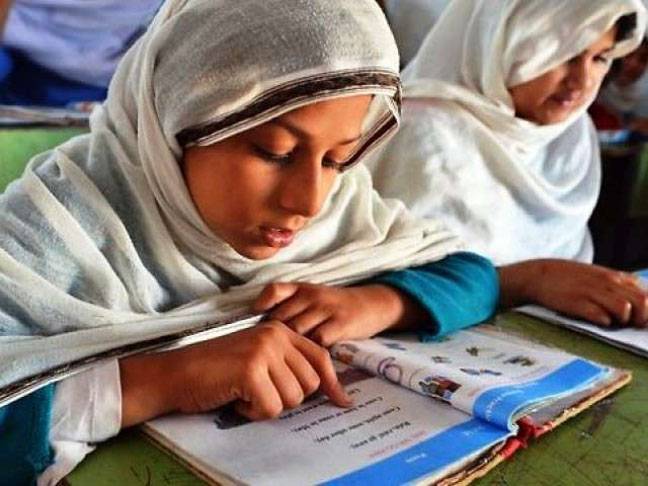Our education dilemma

GUEST WRITER
When it comes to building valuable human capital or combating extremism, education is indeed the most powerful instrument of change. Irrespective of the background, provision of quality education provides everyone with an equal chance to succeed. However this “distributive justice” promised in the very provision of education does not seem to hold true in Pakistan. Though the rhetorical speeches of the politicians chant the slogan and vow to “ nourish” each and every child with a quality education yet when elected education slides down to be the last preference and then conveniently ignored.
According to World Bank data, Pakistan is spending around 2.7 % of its budget on education and the result is before us. Although an increased number of Ph.Ds. and M.Phil scholars have been produced yet we have dearth of innovative minds as majority of them are so ill equipped that they stand nowhere when it comes to international standards. It should not come as surprise when such a miniscule amount we budget for education has resulted in producing so many “highly educated youth”, who are either unemployed or facing redundancy. It might be argued that the judicious allocation of even this minute budget can bring forth the desired result. Real issues run deeper than monetary terms. The social and class inequality embedded in our society is manifested through an inherent discriminatory educational system. Though literacy percentage might have changed but the social and economic disparities still plague the society. Social stratification is evident through our multiple educational systems, which systemically excludes certain segments of society.
Education in Pakistan has gone through many turbulent periods, which as a result has created a new dilemma, the previously formed dual educational system that has now rendered into a quadrupled system: Madrasahs, Government owned schools, pre English private schools and English medium schools.
In Madrassahs the medium of education is largely in Urdu and Arabic. These students usually serve in their home institutes. They are mostly complacent of what they have achieved and are less worried about their future pursuits. The curriculum followed might not equip these students according to the current market demands.
Now, the second and third category that is: Government schools and “pre English private schools”. These schools (pre English medium in particular) have a fee schedule and other expenditures within the reach of lower middle class and middle class. Though English is the medium of instruction primarily the curriculum is taught in Urdu. Though universally condemned corporal punishment is still a common practice in these schools. the teachers are employed on low wages and generally badly trained. Therefore the first lesson these students get is “cram each and every line of the book, ending at national anthem”. It does not end here. Incognizant of the inadequacy of their acquired knowledge they ‘try’ to knock at the doors of some well-reputed educational institutes and are significantly renounced to get in. This is the beginning of the systematic exclusion tormenting our educational system. At the end of the day, they get admission in the public sector universities. These students who already have subservience and timidity deeply entrenched into their personality enter the public sector university where the simple mantra to survive and thrive is “woo your mentors to get good grades”. The notes provided by teacher are the final verdict and it’s mostly taboo to question their professor as it may be taken as disobedience and eventually be reflected in the grades. Few brave ones might complain about the implicit corrupt behavior though majority is hushed. Sadly it does not end here, after graduating with limited academic and social skills they are able to get basic level jobs not befitting their qualification.
Now the ‘blessed’ guys! Hailing from English medium institutes, they tend to follow a trajectory leading to best universities and eventually get “well placed” in life. They have the access and resources to the latest trends and are aware of world dynamics. They are the privileged class who generally land with either highly dignified white collar jobs or become politicians promising “change “ or civil servant or law makers of the future.
A student from a madrasah would generally end up teaching in some Madrasah, students from government or pre-English medium schools are more likely to be placed in basic level jobs whereas the English medium “blessed guys “ would generally land with a decision making high end professions. This is the inherent discrimination of our quadruple educational system. If we want to progress, we should take this educational dilemma seriously, emphasis should be made on quality, authenticity and usefulness of the education. Social stratification based on educational system must be streamlined. The disparity in the system is creating rifts and it might not be long before the fire smoldering in hearts explodes out.
The writer is a former cultural ambassador of Pakistan in the United States of America, under the US Department of State and Alumni, Global Ugrad Exchange Program Fall 2016.





